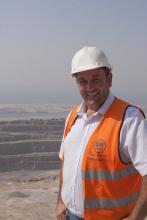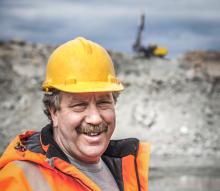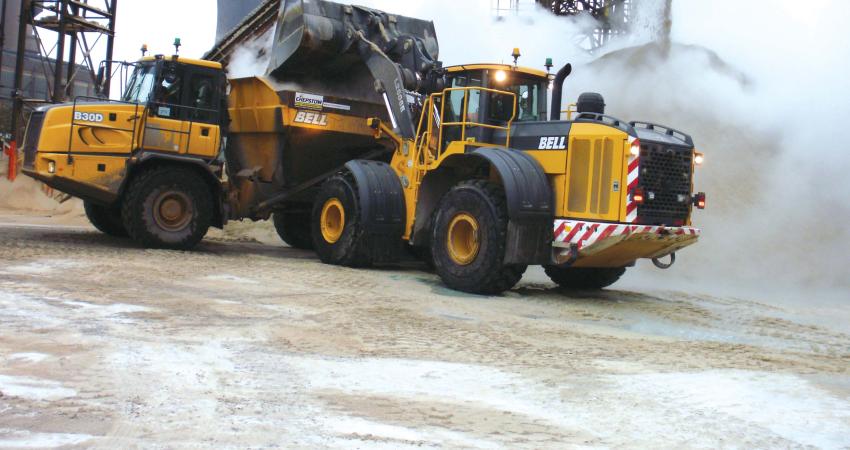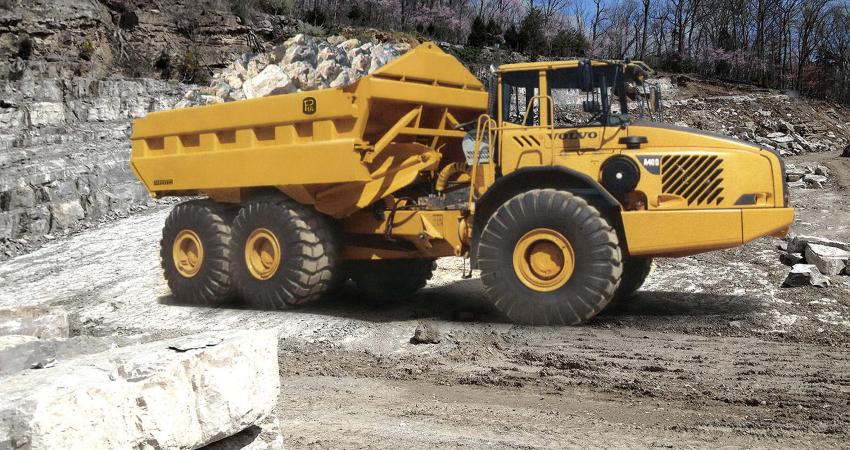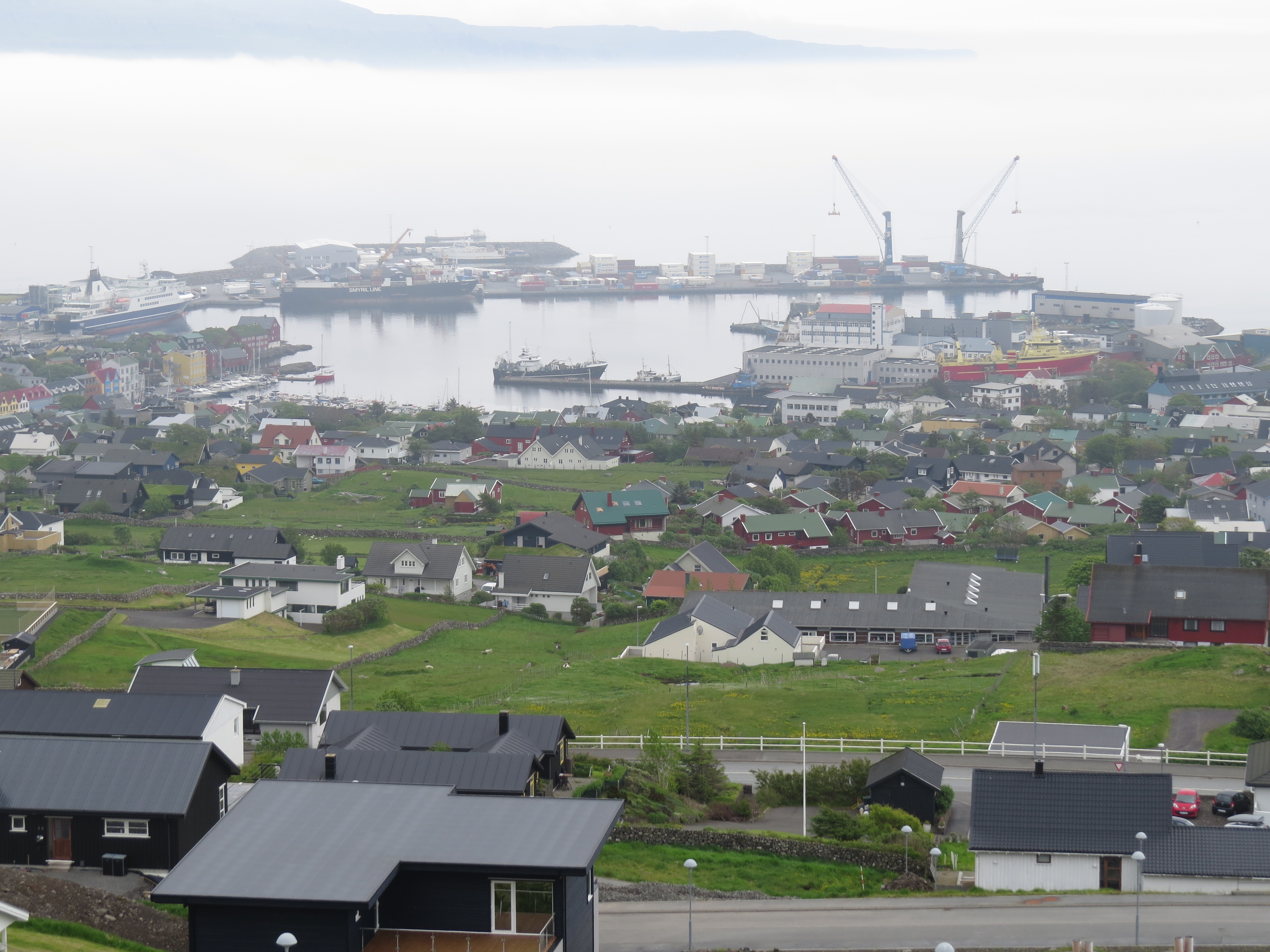
The rugged, but beautiful, Faroe Islands are looking to the future with a big expansion of the main harbour in Tórshavn. Patrick Smith visits the site.
A sailing trip around part of the Faroe Islands in the North Atlantic Ocean is an experience never to be forgotten.
In choppy seas, the boat leaves one of the many small harbours dotted around the group of 18 islands, and with waves rolling across the deck and spray lashing the travellers, heads for the capital, Tórshavn.
Other tourists will experience this if they choose such a trip when they visit these beautiful but rugged, lush green islands, which are covered with steep-sided mountains and waterfalls, and are one of the places regularly mentioned in the BBC Radio’s shipping forecast.
Lying north-west of Scotland about half way between Norway and Iceland, the islands are a self-governing territory of Denmark with huge infrastructure ambitions, including several undersea tunnels to link islands and villages.
But one of the biggest projects currently underway is in Tórshavn, a truly picturesque town (named after Thor, the Norse god of thunder), which is home to some 15,000 of the islands’ total population, which has reached just over 50,000 for the first time. The islands are also home to over 70,000 sheep and nearly 2 million pairs of seabirds.
Tórshavn is also home to J&K Petersen Contractors, a family company, which among other projects, worked on the upgrade to Vágar Airport five years ago, constructed a large new wind farm, and is now using its harbour construction expertise on the DKK386 million (€52 million) Tórshavn Harbour expansion.
The largest and busiest port in the Faroe Islands, Tórshavn Harbour is on the island of Streymoy, and is regularly used by North Atlantic fishing fleets and container ships along with up to 50 cruise ships who call in during the summer.
Poul Michelsen, the Foreign and Trade Minister of the Faroe Islands, points out that while most the Faroe Islands’ income is from the fish industry (95% is from fish farms and 75% of that is salmon), other sources of income are from shipping and tourism.
In 2015 some DKK665 million was earned from tourism and the aim is to increase this to DKK1 billion by 2020.
“At the moment we have a good economy,” says the minister.
“Before 2030 all of the onshore power should be green energy from wind and water and some pumped storage.
“We are also looking for oil offshore. We do know that oil is here. There are 1,200 people working in the oil industry without having any oil.”
Meanwhile, to allow more, and larger ships, to enter Tórshavn Harbour, the city council has planned and approved its expansion, which will see its area increased from its current 60,000m² to 100,000m². Two new 300m long quays will also be constructed along with a new 880m long breakwater wall, which will allow the harbour to be built without interfering with the nearby historical Skansin Fortress, and the coastline in front of it.
To carry out much of the work on the harbour and the breakwater, J&K Petersen has assembled a fleet of equipment from
The Cat equipment includes four 772G rigid dump trucks; one 730C articulated dump truck; two 390F excavators; two 374F excavators; one 352F excavator; one 972M wheeled loader and a 988K wheeled loader, which is used for stockpiling duties.
EQUIPMENT ONSITE
HAULING
4 x Cat 772G rigid dump trucks
1 x Cat 730C ADT
LOADING
2 x Cat 390F L excavators
1 x Cat 988K wheeled loader
1 x Cat 352F excavator
2 x Cat 374F excavators
1 x Cat 972M excavator
DRILLING
1 x Atlas Copco T35 drill rig
1 x Atlas Copco T45 drill rig
CRUSHING
1 x Metso Lokotrack LT105 mobile jaw crusher
TRANSPORT
1 x 740tonne split barge
1 x 500tonne split barge
All the Cat equipment is fitted with VisionLink, a web-based application that enables users to manage the maintenance, health, and utilisation of their heavy equipment, while the Cat Payload system on the 374F machines; wheeled loaders and trucks, allows them to measure the weight of the stones.
“As you can see we are very satisfied with Caterpillar and Pon Equipment Denmark,” says Stein Olvur Petersen, who points out that during the project an estimated seven million litres of diesel oil and 30,000 litres of motor oil will be used.
Work on the harbour is scheduled for completion in November 2019, and much of the equipment is working in an old quarry belonging to the community, which was reopened by J&K Petersen in January to supply various size rocks for the breakwater. The company also installed a new telecommunications mast to improve communications, particularly for the machines.
“The reason for the harbour expansion is that there are often too many ships trying to use it in some periods, especially cruise ships,” says Petersen, managing director of J&K Petersen, whose grandfather founded the company in 1943 as a private transport service for people and local authorities on the island of Sandoy. In 1970 these activities were expanded to include passenger transport on Sandoy.
When the next generation took over in 1975 the company concentrated its efforts as a building contractor, and business continued to grow. In 1989 the company invested in a cement mixing station and associated equipment and vehicles, along with workshop and maintenance facilities, which are now next to the company’s main premises.
In 1994 the company invested in machines for harbour dredging, thus increasing the number of contracts, and in 1996 the first overseas contract was secured - the expansion of the harbour in Grindavik, Iceland. In 1999 the first contracts in Greenland were completed.
It is this expertise that saw J&K Petersen win the contract for the harbour expansion at Tórshavn, where, at present, two boats, the Ragnhild and Siri, carry rock to the breakwater construction site where it is dropped onto the sea bed.
“The idea is that ships with passengers will go inside the harbour and container ships will be outside the harbour,” says Petersen
“The water is 15-20m deep where we are working, and so far we have built the breakwater up 2m. Some 3.1 million m³ of rock is going in to the new harbour, and a temporary harbour has been built for loading facilities.”
It is estimated that 160,000m³ of very high quality concrete will be required for the harbour project, and this is being supplied by J&K Petersen which is also supplying concrete for a nearby tunnel being constructed by NCC.
But high winds are a problem on the Faroe Islands, and weather conditions mean that work is often not possible for up to 90 days/year, so work is pressing ahead at full speed on the harbour, which is being constructed by a team of 70 while a further 40 employees are engaged in producing and transporting rock from the quarry.
For surveying stockpiles at the quarry, the company uses a drone every two weeks, and data is gathered using Redbird software, which is provided by Sitech in Denmark.
This enables J&K Peteresen to measure the cubic metres and height of the stockpiles in seconds.
Blasting at the quarry usually takes place three times a week, with explosives placed in holes drilled by Atlas Copco T35 or T45 drill rigs. They must produce some 6million tonnes of rock, and this will require about 9,000 holes for blasting, equating to 180,000m in total, and 1 million kg of explosives.
Rock is then loaded onto a relay of J&K Petersen’s Cat 772G trucks, which each have a target payload capacity of over 47tonnes and are powered by Cat C18 ACERT engines. It is estimated that during the project each truck will make 6,500 trips. The Cat 730C ADT is also used for hauling.
Loading is carried out by a Cat 390F L excavator and a Cat 988K wheeled loader excavator before the trucks are driven down the quarry haul road, and tipped onto a water’s edge site where the Ragnhild and Siri moor.
The boats are then loaded in turn using the other Cat 390FL.
With four crew members for each barge working two shifts of ten hours for each, the barges do 14 trips a day in total.
It takes some 40 minutes to fill Ragnhild, which carries some 360m³ of stone, and 25 minutes to load Siri, which carries 240m³.
The trip to the breakwater wall takes about 20 minutes, and once there the bottom of each barge opens to allow the rocks to fall into position. For Ragnhild the opening and closing operation takes four minutes: for Siri it is one minute.
The Cat 352F excavator will be used to place stones from a special floating barge but this will eventually be replaced by the Cat 374F excavator, which was delivered to J&K Petersen in June.
“The floating barge is not operational yet because the level of the stones in the sea needs to be higher,” says Petersen.
“We have all sizes of stones, and these are sorted in the quarry. We use HydroPro from Sitech for guiding the stones, and once a month we check progress. When we get to within three metres to four metres of the surface we will use the Cat 352F excavator to help build it up from the barge.
“On top of the larger rocks we will put smaller stones and then gravel. We will crush them smaller with a jaw crusher, and this will be done in the harbour.
“We did a similar project seven years ago, but this in Tórshavn is much bigger, although the principle is the same.
“Our company has always been very good at making harbours so here is nothing we have not done before.”
At the end of the trip, Michael Bahn Jørgensen drives us away from Tórshavn to the small village of Gjógv in Sunda kommuna, which he describes as his favourite spot on the islands. You need to be there to see why.



